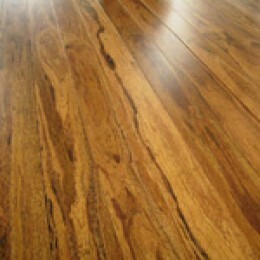Comparison between Strand Woven Bamboo and Coconut Flooring

Strand woven bamboo flooring and coconut flooring are both made from renewable resources and so both are examples of sustainable flooring. These two types of environmentally friendly flooring share several striking similarities.
- More about coconut
- Coconut palms grow in hot and humid climates. Since coconut palms cannot survive frost they mostly grow in the tropics. The biggest producers of coconuts in the world are Hainan of China, the Philippines, Indonesia, India and Brazil. A coconut can grow from a seed to full maturity in just 5 or 6 years. It is this incredible rate of growth that makes coconut palms a renewable resource.
- More about bamboo
- Bamboo grows in a much wider area than coconut palms. It is the fastest growing species on the planet. Bamboo is ready to harvest in just 5 to 7 years. It has a natural resistance to pests and pathogens and so doesn't need pesticides to flourish. Planting bamboo stops soil erosion and cleans the soil. And bamboo produces more oxygen than trees.
- To make bamboo flooring the bamboo is cut and dried and then glued as vertical or horizontal flooring planks. To make strand woven bamboo flooring the bamboo is cut into strands which are then treated with heat, pressure and a glue to produce a hard block of bamboo. This block is then cut into strand woven bamboo flooring planks. The advantage of strand woven bamboo flooring is that it is much harder than vertical or horizontal flooring.
- Comparison of bamboo and coconut
- In terms of performance strand woven bamboo flooring and coconut flooring are similar. Both are strong, hard and durable flooring types that with a minimum of maintenance can last a life time. They are both capable of withstanding high traffic and heavy furniture. Strand woven bamboo flooring has an incredible Janka Hardness Rating of 2,500 pounds force. Coconut flooring has a Janka Hardness of 1,600 pounds force.
- Although strand woven bamboo flooring and coconut flooring each have their own distinctive appearance, they are similar in that they are both natural looking flooring types with a grain. Both types of flooring are available in lighter natural tones and darker carbonized tones. Both look like hardwood and perform like hardwood flooring.
- In terms of health, both bamboo and coconut flooring offer hard surfaces that are easy to keep free of dust mites that frequently trigger allergic attacks. However, strand woven bamboo flooring is also anti-microbial and has a natural ability to fight off pathogens. This amazing ability has lead to many people asking for bamboo floors and bamboo linen in hospitals.
- Finally, in terms of price coconut flooring and strand woven bamboo flooring are usually cheaper than hardwood flooring. Coconut flooring is still a relatively new idea so it might be easier to buy strand woven bamboo flooring from a local dealer than it is coconut flooring. Both strand woven bamboo flooring and coconut flooring are excellent and beautiful looking alternatives to hardwood flooring.


 皖公网安备 34180202000049号
皖公网安备 34180202000049号